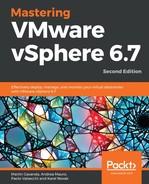Logical design is something that architects sometimes struggle with because of its abstraction. This is particularly the case for architects who have been working with specific technology for a long time because they tend to build the design using the specific technologies they know (from a hardware or software perspective).
In general, a logical design should be an abstract, vendor-agnostic design with functional specifications of what you want to build. It should not contain any references to specific technologies or vendors because you might use conceptual designs together with logical design as a part of request for information/request for proposal (RFI/RFP) when selecting your vendor for such a solution.
If you skip logical design or build it based on a specific vendor, you lock yourself into one particular vendor and miss the opportunity to catch your exact functional requirements. This leads to vendor preselection, and might not bring the desired value to the customer. (This occurs if the solution is more complicated than necessary, or the costs are not balanced.)
A logical design must include the logical design overview, before covering every infrastructure component you will be deploying:
- Compute design
- Network design
- Storage design
- Backup and recovery design
- Disaster recovery design
- Security design
- Cloud automation design
- Virtual Desktop Infrastructure (VDI) design
Examples of bad logical design decisions include the following:
- Four or more ESXi hosts required per HA/DRS cluster
- vSphere HA used for protection against host failures and VM failures
- The ESXi cluster based on HP DL360 G10 hosts needing to be installed across multiple racks
The preceding can be rewritten as great logical design decisions:
- A minimum of four hypervisors deployed in compute cluster.
- A native workload protection mechanism within the hypervisor with the necessary functionality to restart virtual machines if the hypervisor or virtual machine is unresponsive.
- Hypervisor hosts must be deployed in separate cabinets. Form-factor of the server must fits to the standard datacenter cabinet.
Here is an example of a logical design:

